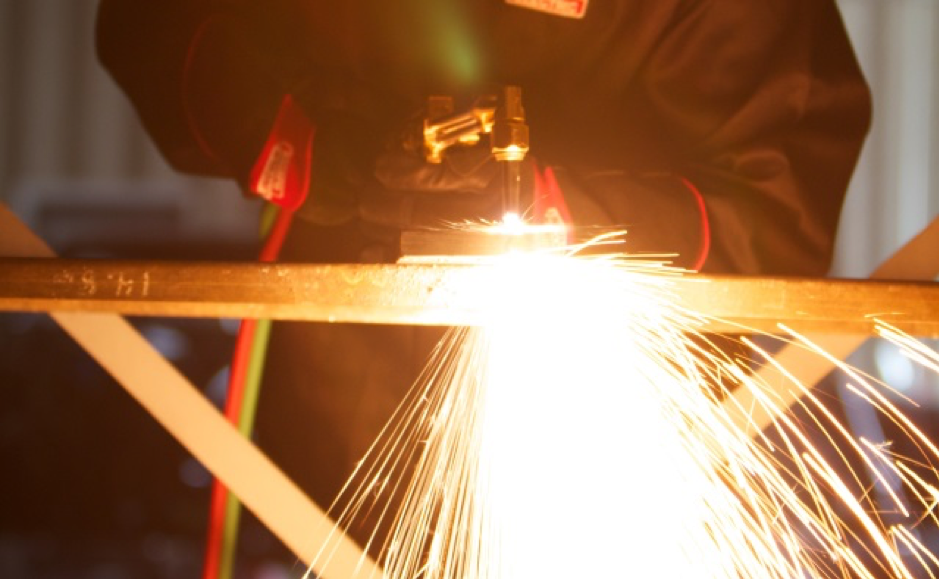
Yes, titanium can readily and effectively be cut with an oxy-fuel torch. There are, however, a number of things you should be aware of first:
- When cutting titanium, cutting speeds will be 30% to 50% faster than with steel.
- The width of the cut kerf can be significantly wide resulting in expensive scrap loss and poor quality cuts.
- The chemical reaction of oxy-fuel cutting titanium produces copious amounts of smoke, dust, and extremely bright sparks significantly increasing the safety hazards.
- Under certain conditions, cutting titanium over a water table can potentially produce large volumes of a dangerous explosive hydrogen-air mix.
When cutting titanium, personnel should always wear the proper type of breathing protection or use down-draft fume control systems to shield them from potentially harmful oxides of titanium. The sparks from cutting are intense and can travel a great distance too. Extra care should be taken regarding fire protection in the work area and in the selection of proper PPE. The light and sparks produced by this process are extremely bright so we suggest no lighter than a #5 shade lens, even if using an alternate fuel gas.
Tips should be ¾” to ½” – the size recommended for the same equivalent thickness of steel. Example: If you have 1″ titanium, you should be able to cut effectively with a tip size that is recommended for cutting ½” to ¾” steel, the reason being titanium has much higher affinity for oxygen at high temperatures than does mild steel. Cleaner, more narrow cuts reduce the extremely high material costs associated when working with titanium – even scrap titanium. Whenever practical, Harris recommends using machine cutting tips. They generally produce a smaller kerf and higher quality cut, both of which reduce cost.
WARNING – Flame cutting titanium under certain conditions can produce high volumes of hydrogen that can combine with air, producing a highly explosive gas mix. High volume cutting of titanium over a water table is an example. Theoretically, the cutting reaction will liberate hydrogen from the water, and it will combine with ambient air to form a highly explosive mix in the space between the water surface and the plate above. Cutting over a down-draft system, or keeping the area open and well ventilated will help prevent dangerous amounts of hydrogen from accumulating. If cutting over a water-table has no options, bubbling compressed air through the water in the area under the cut is a simple practical solution.
